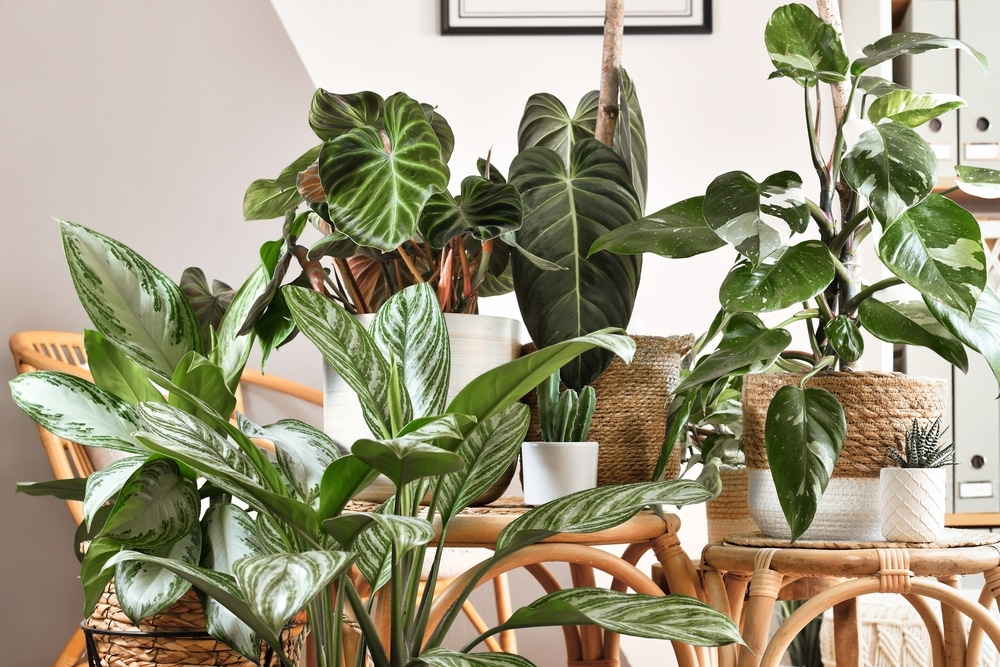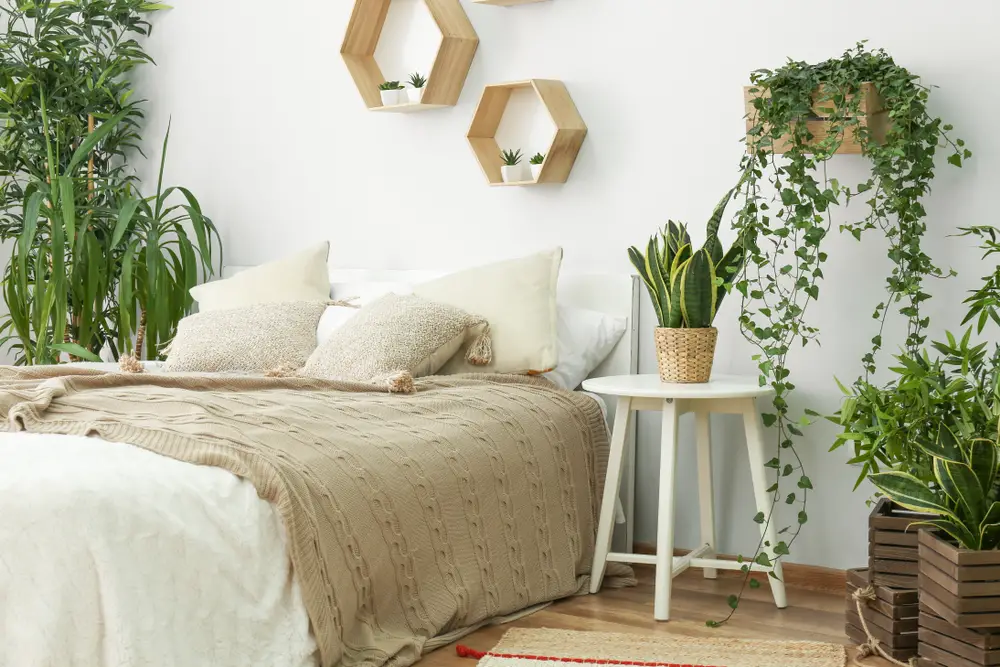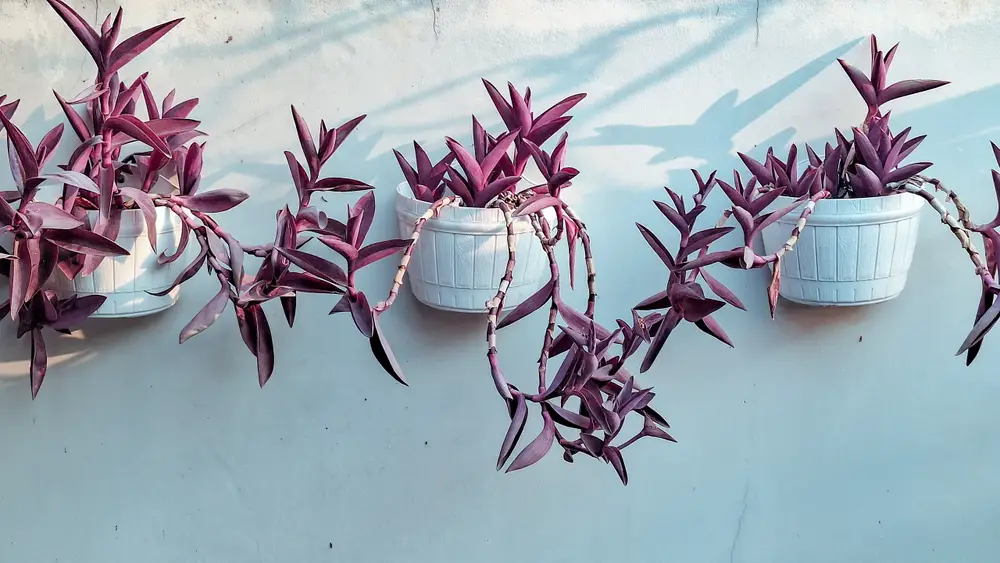If you are enthusiastic about terrarium plants, the chances are high that you keep some in your house.
The thing about terrarium plants is that they add a certain allure to your home with their varied foliage, textures, and colors.
Furthermore, it is exciting and fulfilling to take care of one to its full growth and health.
There are numerous types of terrarium plants out there, some of which you have never heard of. This article features seven of the rarest and most exotic terrarium plants that you should know of. While some are a breeze to grow and take care of, you might want to steer off others if you are a beginner in growing terrarium plants.
1 – Aerangis Punctata
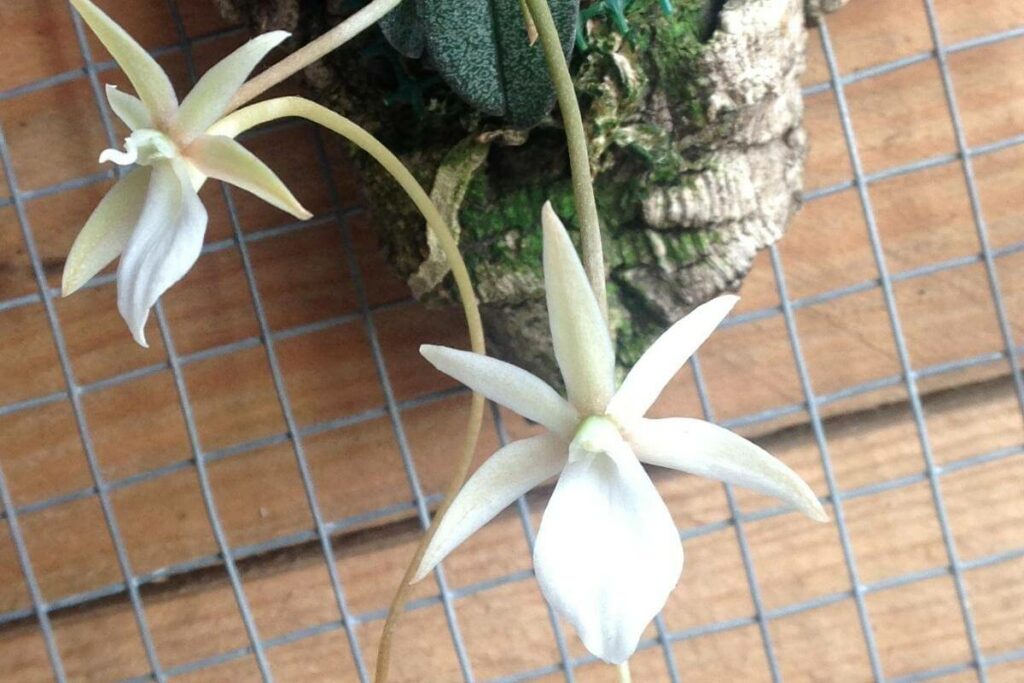
The Aerangis punctata, also commonly referred to as the dotted Aerangis, is originally from Madagascar.
Its natural habitat is highland forests with an altitude of between 900 and 1500 meters above sea level.
This miniature angraecoid orchid is made up of beautiful rugose roots and a flower that is almost as big as the plant. Emerging from a corkscrew-like structure in the middle of the flower is a nectar that can grow up to 4″ long.
The tiny plant also has leaves that max out to a length of about 1″.
This exotic species makes for a perfect terrarium plant if the right conditions are met:
- For one, the plant is thermophilic. Depending on the climatic season, it should be kept in a high humidity area, anywhere between 60% and 75%.
- It requires bright and filtered light; at no point should you expose it to direct sunlight as it may dry up the plant quickly.
- Also, the plant requires daily watering. However, you should be moderate with it, so it is damp, not soggy. The space should be open enough to allow strong air movement for the plant.
Bonus Tip: If you want to enhance its growth, you should fertilize the plant once a week with only a quarter to a half of the recommended dose.
2 – Hypoestes Phyllostachya- Polka Dot Plant
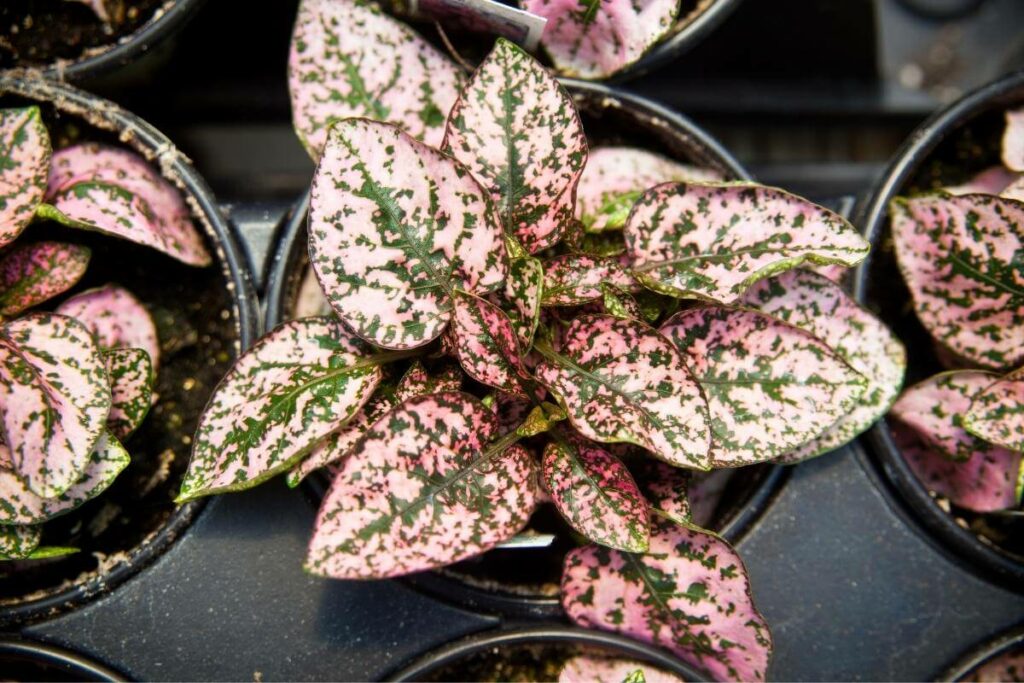
Popularly known as polka dot plants, the hypoestes phyllostachya is a rare terrarium plant that is native to Madagascar.
You can also find it in parts of South East Asia and South Africa. People like to grow the plant because of the pop of color it adds to the household.
The rare plant belongs in the plant family Acanthaceae.
You would be intrigued to know that the plant has been miscategorized for years, and it is only recently that it was placed under the group Hyphoestes, which houses over 100 plants.
Naturally lilac in color, hypoestes phyllostachya can also grow into a range of other colors depending on the amount of light it receives.
For the best and brightest colors, you should ensure it has access to bright but indirect sunlight.
If they don’t get sufficient sunlight, the plant can get leggy and develop long shoots, which can be problematic when growing in a terrarium.
Essentially, polka dot plants are not difficult to grow. In their natural setting, they grow in warm climates.
Therefore, they would require warm temperature and high humidity to grow well in a terrarium. Even so, they have a moderate growth rate and tend to be small even when they are mature.
3 – Dendrophylax lindenii- The Ghost Orchid
This rare terrarium plant, Dendrophylax lindenii, is all flower and no leaves.
In case you are wondering, it carries out photosynthesis through its roots, which is quite unorthodox for plants.
It has about two or three roots. In turn, the process of photosynthesis produces one of the most beautiful flowers you will ever see.
Natives of Florida, ghost orchids grow very slowly and are also very difficult to grow. While they are easier to grow than the pure lindenii species, they are not suitable for beginners.
As such, they are best left to experienced growers.
The ghost orchid requires high humidity and pure water to thrive: rain water or distilled water.
Our Recommendation: It is best if you water the plant daily – more of misting – and expose it to sunlight for some time during the day. You can also apply a low dosage of orchid fertilizer to encourage the plant to grow.
4 – Anoectochilus Chapaensis – Jewel Orchid

This terrestrial orchid is a perfect terrarium plant that grows naturally in Southeast Asia, specifically China, Yunnan, and Vietnam.
It has one of the most beautiful foliage and is sometimes referred to as the ‘golden jewel.’ This is primarily because it has brightly colored veins on dark-colored leaves, creating something so wondrous to look at.
The dark color of the leaves is somewhere between burgundy to dark green. On top of that, the leaves are heart-shaped, making them even more alluring.
While they grow slowly, jewel orchids are relatively easy to grow. Terrestrially, they grow under low light levels and high humidity.
Therefore, you want to keep them away from direct sunlight, preferably in a warm, darkroom. Also, ensure that humidity is higher than usual for the plant to grow healthy.
Additionally, it helps to keep the soil moist at all times. However, water the plant moderately, making sure you don’t overwhelm it.
Read our guide on Terrarium soil depths and types here
5 – Tillandsia (Air Plants for Terrariums)
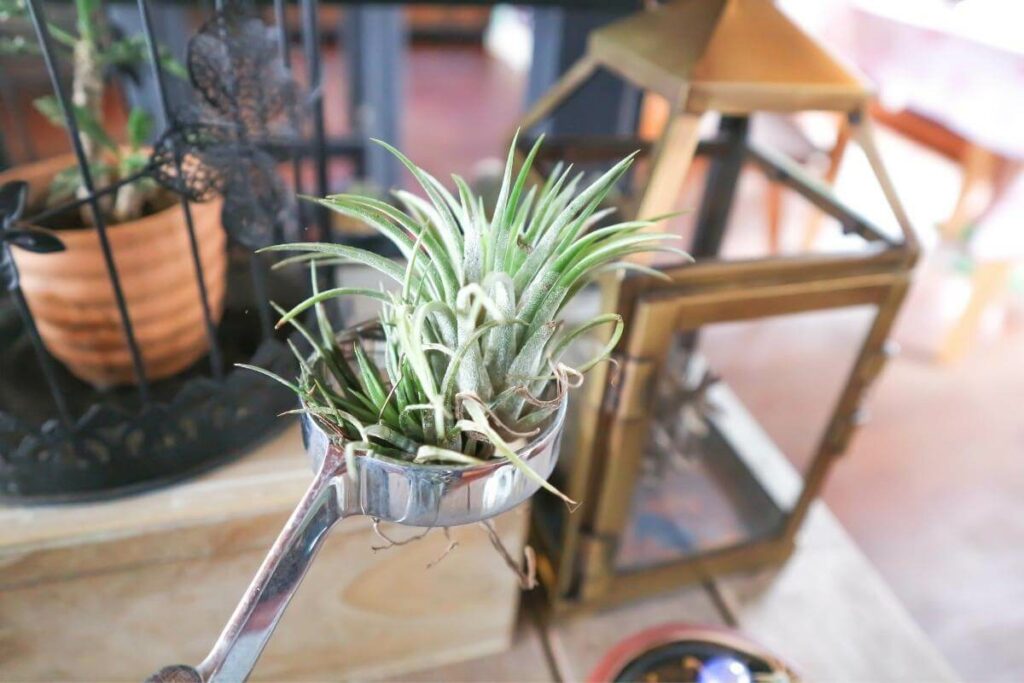
Tillandsia is a type of air plants that belong in the Bromeliaceae family.
They are liked for their minimal care requirements and the creative ways they can be displayed in the house. They are unique in that they don’t have roots like other plants, which is why they are called air plants.
Therefore, they absorb nutrients through their leaves. Essentially, these air plants survive on moisture and moderate light.
While they require minimal care for growth, the tillandsia does not grow easily. They require some level of expertise and a lot of patience, which is why they are not recommendable for beginners.
Since they have no roots, these plants require special care:
- You can’t water them the normal way. You ought to take them out of the terrarium and do one of three things: soak them for a couple of hours, moisten them lightly using a water gun, or rinse them. Afterward, gently put them in the terrarium after they have dried up.
- Also, air plants do best with bright but filtered light. Thus, a south, west, or east-facing window will work just fine.
- Since they need moisture and air circulation all day long, an open terrarium is the most suitable for tillandsia.
6 – Asplenium Nidus – The Bird’s Nest Fern

The Asplenium nidus is a native of South East Asia and East Australia.
Also known as the Bird’s Nest Fern, this plant does well in tropical regions but can thrive in a terrarium if the right conditions are provided.
The two main conditions for growing and maintaining this plant are:
- high humidity and
- protection from direct sunlight
However, it is recommended that you ensure that they receive some sunlight as it helps with their well-being. Some morning or pre-sunset sunlight would be best.
In its natural environment, the Bird’s nest fern grows epiphytically in parts of huge trees.
Still, it can grow well in the background of a tropical terrarium with enough space to grow out.
In appearance, the Bird’s nest fern differs from other ferns with leaves that are shaped as spears instead of the palm-like fronds that are synonymous with ferns.
It will, without a doubt, introduce an exotic feel to your space.
7 – Macodes Petola – Lightning Jewel Orchids
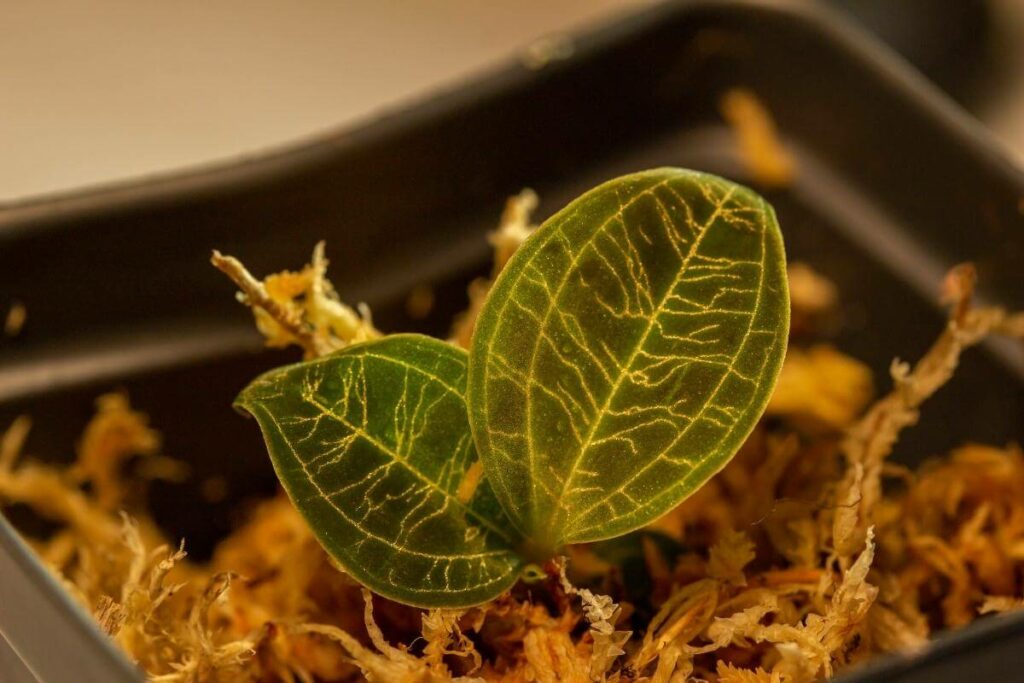
The extremely beautiful Macodes petola is a rare indoor plant that people seek primarily for its stunning leaves.
The leaves are sparky with crystalline veins, which instantly bring the image of gold flecks of lightning, which would explain why they are also referred to as Lightning jewel orchids.
On top of being quite difficult to find, these plants grow very slowly.
The good news is that they do not require any special treatment- you can grow them like normal houseplants, and they will flourish, albeit at a slower rate.
You should ensure that they receive a daily dose of filtered sunlight in moderation. Be careful not to expose them to direct sunlight as it is detrimental to their growth and development.
Moreover, they do fairly well in mild temperatures that do not go below 10 degrees Celsius. Humidity is not such a big deal with this plant, so it should do great in a closed terrarium.
The roots should be kept moist at all times- never should they get dry or soggy.
Origin: In nature, the Macodes petola is found in Southeast Asia, in the mountain forests of Japan, Malaysia, and the Philippines.
Final Words
Generally, most terrarium plants are tropical, meaning that they require high humidity, moisture, warmth, and indirect sunlight to thrive. Exotic and rare terrarium plants are no different.
In the article above, we have explored seven of the rarest terrarium plants, some of which you may never have heard of.
If you are up to the task, you could find some of them, grow them, and give your home an exotic touch.

